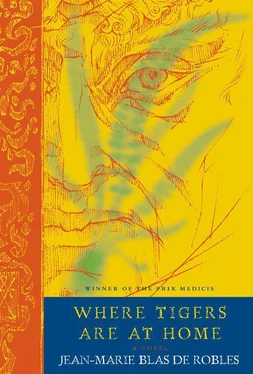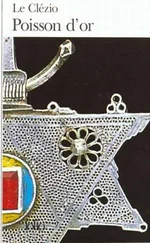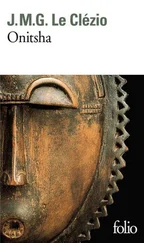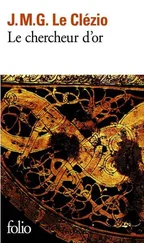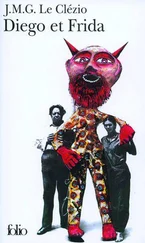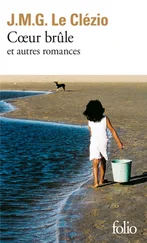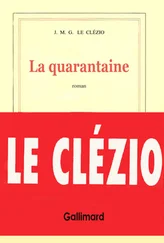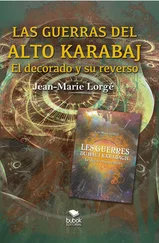He likewise met Monsieur Thévenot de Melquisedeq, who had travelled to China & had returned with an inordinate taste for oriental philosophies. Fascinated by Kircher’s knowledge of these difficult subjects, he invited him to spend several days at the Désert de Retz , a property he owned on the outskirts of Paris. I was not allowed to accompany him & am therefore not in a position to say what happened there, especially since Athanasius always maintained a discreet silence on the subject. But on the pretext of religion or some Chinoiseries, my master was compelled to witness scenes decency forbade him to describe, for every time he mentioned an example of human lechery or excesses to which idolatry or ignorance can lead, he would cite the Désert de Retz as the principal source of his experience.
After just a few weeks spent in Paris, we finally arrived at the Collège d’Avignon, where Father Kircher was to teach mathematics & Biblical languages. A Northerner brought up in the Germanic mists, Athanasius was immediately taken with the brightness of the South. It was as if the world were opening up again for him, as if he could suddenly see its divine light. More than a simple star to observe through the telescope, the Sun proved to be the lamp of God, His presence & His aura among men.
Discovering in the plain of Arles the wonderful predisposition of the sunflower to follow the course of the sun, my master conceived and immediately constructed a clock based on this singular principle. He filled a small, circular basin with water on which he floated a smaller disc bearing a pot containing one of those plants. No longer held back by its fixed roots, the sunflower was free to turn toward the daystar. A needle attached to the center of its corolla indicated the hours on the fixed ring which crowned this curious device.
“But above all this machine,” Kircher said when he presented it to the college authorities, “or, to be more precise, this biological engine in which art & nature are so perfectly combined, shows us how our soul turns toward the divine light, attracted to it by an analogous sympathy or magnetism of a spiritual order when we manage to free it from the vain passions that impede this natural inclination.”
The heliotropic clock was soon known through Provence & contributed greatly to the spread of his fame.
My master also found it a valuable advantage to be living close to the port of Marseilles. Thus it was that he had the good fortune to meet David Magy, a merchant of Marseilles; Michel Bégon, treasurer of the Levant Fleet in Toulon; & Nicolas Arnoul, master of the galleys, who had been commissioned to go to Egypt & bring back various objects for the King of France’s collections. It was through these people, who purchased all the curiosities the Jews & Arabs could bring them, that Kircher saw any number of little dried crocodiles & lizards, vipers & serpents, scorpions & chameleons, stones of rare color engraved with ancient figures & hieroglyphs as well as all sorts of Egyptian images made of glazed terracotta. He also saw some sarcophagi & a few mummies at the house of Monsieur de Fouquet, idols, stelae & inscriptions, of which he always begged to be allowed to make an impression. Athanasius never wearied of going around the country to visit these people and admire their collections. He bought, exchanged or copied everything that was directly relevant to his researches, especially Oriental books or manuscripts that reached the continent in Provence. Thus it was that one day he had the great good fortune to exchange an old astronomical telescope for an exceedingly rare Persian transcription of Saint Matthew’s Gospel.
Conjecturing that the Coptic still spoken in Egypt was like the petrified language of the ancient Egyptians & that it would be useful in penetrating the secrets of the hieroglyphs, Kircher immediately started to study it & became very knowledgeable in it within a few months.
My master seemed to have forgotten Germany & all his ties with Fulda; he never ceased to learn, nor to put his astonishing ingenuity into practice. Thus it was that, shortly after our arrival in Avignon, he had the idea of illustrating his knowledge of catoptrics by constructing an extraordinary machine. Working day and night in the tower of the Collège de la Motte he assembled, with his own hands, a device capable of representing the whole of the heavens. On the appointed day he astounded everyone by projecting the entire celestial mechanics onto the vault of the grand staircase. As if impelled by their own motion, the Moon, the Sun & the constellations moved in accordance with the rules established by Tycho Brahe, & by a simple & swift contrivance he was able to reproduce the precise state of the sky at any date in the past. In response to requests from teachers and students he thus presented the horoscopes of Our Lord Jesus Christ, of Pyrrhus, of Aristotle & Alexander.
It was on that occasion, as Pierre Gassendi recounts in his memoirs, that Nicolas Fabri de Peiresc, councillor at the parliament of Aix and a native of Beaugensier, was informed of Kircher’s researches. When he learned that my master was already well known for his knowledge of hieroglyphs, he insisted on meeting him.
A strange man, this Provençal country squire: fascinated by the sciences & the friend of some of the most distinguished scholars, he had conceived a passion for the antiquities of Egypt and their enigmatic script. He spent a fortune acquiring any object of importance in that area. Not long previously Father Minutius, a missionary in Egypt & the Levant, had offered him a papyrus roll covered in hieroglyphs that had been found in a sarcophagus, at the feet of a mummy. Peiresc had great hopes of Kircher’s ability to translate the pages and wrote inviting him to stay with him in Aix, at the same time sending him, as a gift, several rare books and a copy of the Table of Isis , also called the Bembine Table . As a postscript he asked him to bring with him the famous manuscript of Barachias Abenephuis, which Athanasius had been fortunate enough to acquire.
Kircher was flattered by this keen interest & one day in September 1633 we travelled to Aix, with said manuscript in our luggage as well as various specimens of the Hebrew, Chaldaean, Arabic and Samaritan languages.
Peiresc welcomed us with a charm & delight such as is rarely seen. He was proud to meet my master & did everything he could to make himself agreeable to him. Kircher, for his part, was very impressed by the collections his host revealed to him little by little, making the most of its effects & enjoying our sincere admiration. His house was crammed full with all kinds of dried or stuffed animals, but equally with a multitude of Egyptian artifacts & books. There for the first time we saw a phoenicopterus, an aspic, a horned viper, a lotus & any number of dried & mummified cats. In his garden he showed us several pink laurels, which he had grown from a shoot given him by Cardinal Barberini, as well as a pond with graceful papyrus all around from which he made paper in the manner of the Egyptians. We also admired a kind of little rabbit, the size of a mouse, which walked on its hind legs & used it front paws, which were shorter, like monkeys to hold the food it was given, & an angora cat Father Gilles de Loche had brought back from Cairo for him as well as various manuscripts obtained at great expense from the Coptic monasteries of Wadi el-Natrun.
Peiresc, now completely won over by Athanasius, finally revealed his two human mummies of which one, notable for its size and state of conservation, was the corpse of a prince, as was proved by its richness of ornamentation. It was at the feet of this mummy that the little book in Egyptian hieroglyphs had been found that Peiresc had mentioned in his letter to Athanasius. The book was made up of pages of old papyrus written in hieroglyphic characters like those on the obelisks. There were bulls & other animals & even human figures together with other smaller characters, like those in the Bembine Table , but no Greek letters.
Читать дальше
